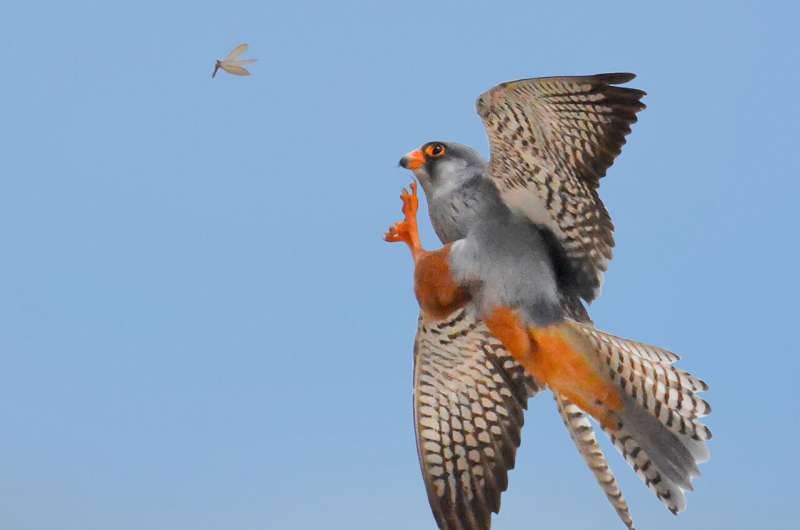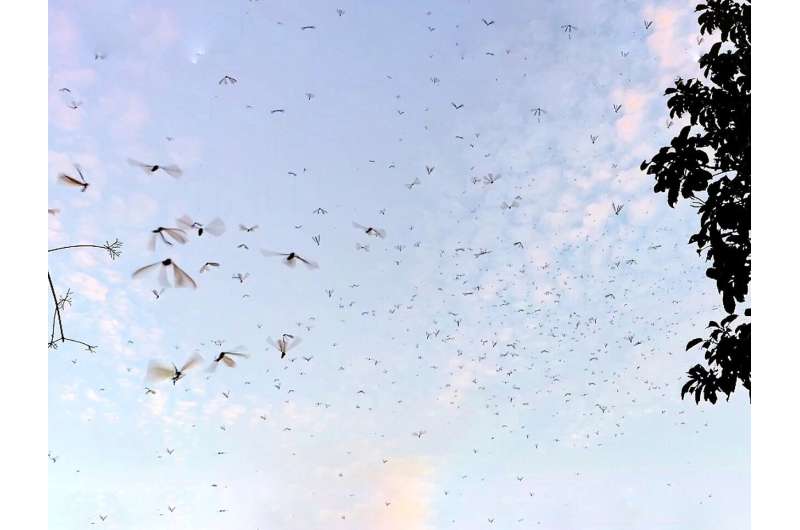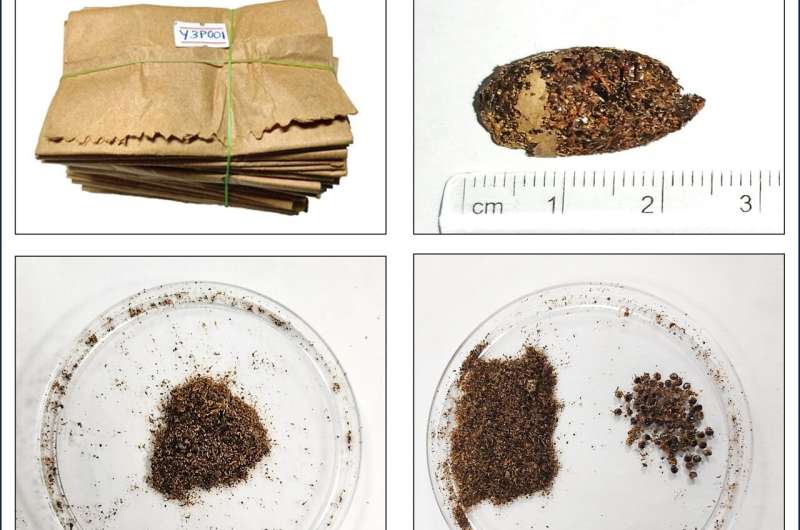This article has been reviewed according to Science X's editorial process and policies. Editors have highlighted the following attributes while ensuring the content's credibility:
fact-checked
proofread
Two billion termites in two weeks: How Amur falcons cross the Arabian Sea

One million Amur falcons (Falco amurensis) can consume two billion termites in just over fifteen days. This is according to a paper published in the Journal of Raptor Research. These numbers are big, and the conclusions are even bigger—Northeast India provides a crucial stopover site for these falcons as they prepare to cross the Arabian Sea, a flight that earns them the title of the raptor with the longest known flight over water.
Amur falcons are small raptors that engage in a transcontinental migration twice per year. Their autumn migration takes them from breeding grounds in northern Asia all the way down to southern Africa. To pull off the 3,500 km (2,000 mile) flight over the Arabian Sea, they must first stock up on protein-rich food, and termites are their chosen bonanza.
In their paper titled "Prey Species in the Diet of the Amur Falcon (Falco amurensis) During Autumn Passage Stopover in Northeast India," lead author Amarjeet Kaur of the Wildlife Institute of India, and co-authors identify Nagaland, in Northeast India, as a critical "stopover site" for the Amur falcon. As insectivores, Amur falcons are likely dependent on these termites to complete their migration, making this area a potentially critical conservation priority.
To determine the importance of insects in the diet of the Amur falcon during migration, Kaur and her colleagues examined over 1,000 regurgitated pellets collected from beneath a prominent Amur falcon roosting site in Nagaland, during October and November of 2017 and 2018. The pellets, which are composed of indigestible prey remains, revealed high percentages of body parts belonging to two species of fungus-growing termites, Odontotermes feae and Odontotermes horni. The termites appeared to be the most prevalent prey for the falcons across both years, and among three different roost sites.
The research team also observed large numbers of Amur falcons feasting on swarms of termites, offering further evidence that these insects are highly prized by the falcons. Termites contain an easily digestible form of protein and high levels of fat, a fact verified by local hunters who call Amur falcons "loi," meaning "insect eater." Earlier local hunters used to harvest falcons towards the end of their stopover season because their consumption of termites resulted in a rich layer of fat.

Today, Naga peoples are heavily involved in the protection of the falcons, and communities have shifted away from hunting Amur falcons during the migration season.
A co-author of the study, Kumar initially began this project to create local awareness about the falcons, and now, he says, the birds serve as a flagship species for regional conservation efforts. "Local communities in Nagaland and neighboring states of Manipur and Assam have independently begun setting aside community lands for the protection of not only Amur falcons, but for all biodiversity in the area," he says. "Given that Nagaland is predominantly governed by community-owned land, conservation actions are significantly shaped by local residents."
The findings of this study are important because they reframe the importance of stopover sites in the annual cycles of the Amur falcon, and particularly the pre-Arabian Sea refueling area of Nagaland. Kaur and her team were surprised at the strength in association between the Amur falcons and the termites, noting that "it appears that termites are the exclusive prey in this region, and the synchronization between termite emergence and the presence of Amur falcons is remarkable."
As long-distance migrants, the falcons are tied to a tight schedule and therefore, they are potentially vulnerable to environmental change that could create a mismatch in this termite-falcon synchronization. Climate change has already affected the behavior of other long-distance migrants such as great knots (Calidris tenuirostris) and bar-tailed godwits (Limosa lapponica). This study also highlights the contribution of insectivorous raptors like the Amur falcon to regulating insect populations, a fact further verified by studies of the falcons on their wintering grounds in southern Africa.

Kaur and her colleagues hope to identify habitat-specific features of the falcon stopover sites across Northeast India and use that data to develop "a more robust GIS-based modeling approach." They also want to conduct a detailed study of how termites vary across the different sites.
"We need to determine if the termite swarming events are cyclic in nature and how they might be influenced by climatic factors, particularly monsoonal rains," the team states.
If Amur falcons rely on just a few places to acquire the energy necessary to complete their migration, then understanding site connectivity is essential. As the authors of the study put it, "Amur falcon conservation requires a landscape-scale approach."
More information: Amarjeet Kaur et al, Prey Species in the Diet of the Amur Falcon (Falco amurensis) during Autumn Passage Stopover in Northeast India, Journal of Raptor Research (2024). DOI: 10.3356/JRR-23-49
Provided by Raptor Research Foundation

















